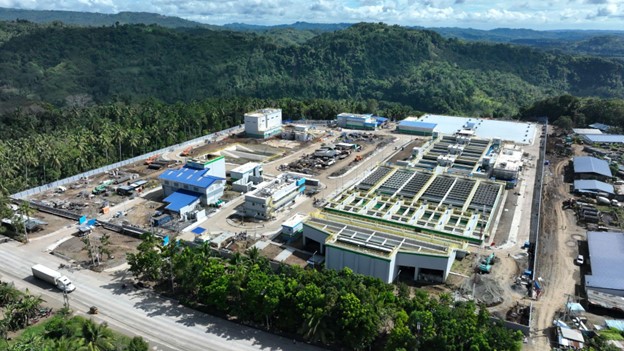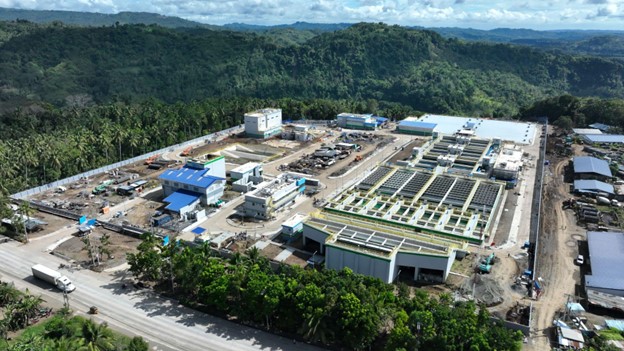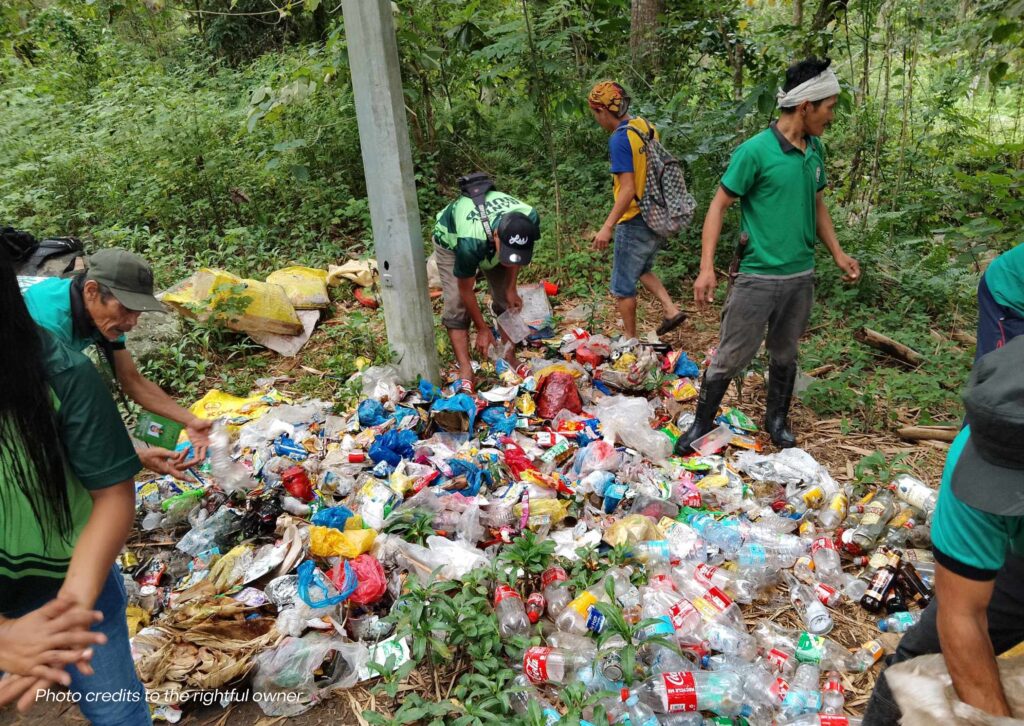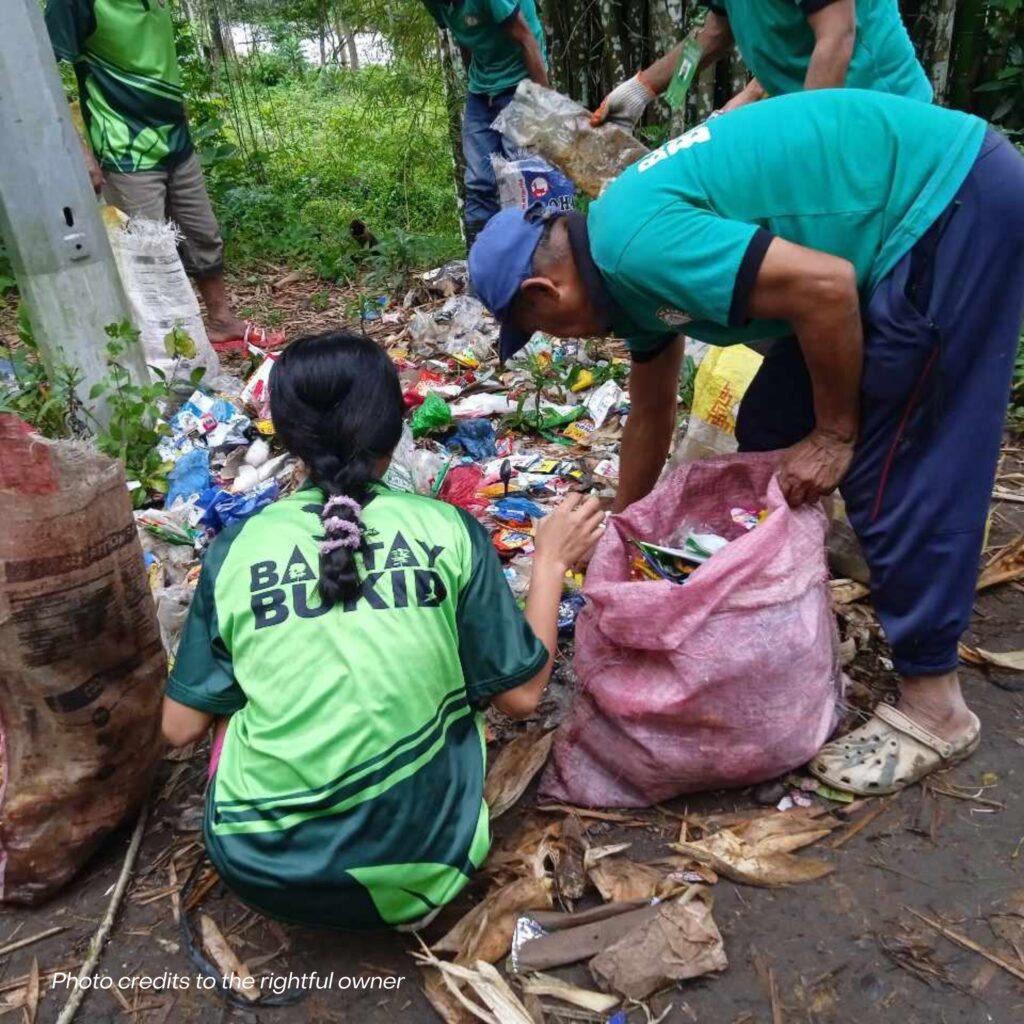By Henrylito D. Tacio

From time to time, the country’s largest city in terms of land area is confronted with water issues: either there is too much water (when there’s heavy rainfall) or no water (during the drought season or when the waterways are being fixed) at all.
First, the good news. Apo Agua Infrastructura, Inc. (Apo Agua), a water subsidiary of Aboitiz InfraCapital (AIC), has reached a major milestone by commencing the supply of safe, reliable, and sustainable water to the Davao City Water District (DCWD) since December 1 last year.
Both parties have verified that the water quality meets the Philippine National Standards for Drinking Water, the benchmark for water safety in the country. The project is “a significant leap forward in the country’s water infrastructure development,” said a press release.
In a recently released joint statement with Apo Agua, DCWD said that it had begun supplying the water to its Calinan, Tugbok, Riverside, Dumoy, Cabantian, and Panacan water supply systems.
“We are proud to mark this milestone of our Apo Agua team in partnership with the Davao City Water District to deliver safe, reliable, and sustainable water to the people of Davao. For Aboitiz InfraCapital, this achievement also underscores our commitment to advancing crucial infrastructure, building thriving ecosystems and enhancing the quality of life in the communities we serve while being responsible stewards of the environment,” said AIC President and CEO Cosette Canilao.
The Davao City Bulk Water Supply Project (DCBWSP) – as it is known – is the largest of its kind in the country at 300 million liters per day (MLD), with a 70-kilometer pipeline. It addresses the water needs of over one million people in the city. More importantly, it augments the city’s reliance on groundwater sources, allowing the aquifers to rest and replenish while accommodating increasing water demand.
The DCBWSP is touted to be environment-friendly as it is powered by renewable energy sourced from its own run-of-river hydroelectric power plant. Considered to be a first in Southeast Asia, it was planned to use the water-energy nexus idea where the water utilized to produce power is treated and supplied to DCWD’s water supply systems, generating an environmentally conscious and efficient water supply cycle.
To make sure the water it is supplying to the people is safe, the project has a facility that includes a laboratory – which the Department of Health accredits – for water quality analysis that is capable of conducting additional water test parameters. This is to ensure that high-quality potable water is consistently delivered to DCWD for distribution to its customers.
The Apo Agua’s Water Treatment Plant is located in barangay Gumalang along the Bukidnon-Davao Highway.
The DCBWSP project has two vital components: Part A is the production and treatment of water supply led by Apo Agua, involving the construction of Raw Water Facilities, a Water Treatment Plant, and Treated Water pipelines.
Part B is the distribution of water supply to consumers managed by DCWD. Apo Agua produces water for DCWD’s eight off-take points, namely: Talandang, Calinan, Tugbok, Panacan, Cabantian, Panorama, Mandug, and Indangan.
“We are honored to be serving the people and thriving community of Davao City. With our partner, DCWD, we are ensuring that each drop causes a ripple, not only in sustaining the immediate needs of Davaoeños but also in fueling the long-term growth of the region,” said Apo Agua President and AIC Head of Water Business Eduardo Aboitiz.
“As we continue on this journey, we look forward to further collaborative efforts that leave a lasting impact on the communities we serve and the nation we are building together,” he added.
The bulk of the water comes from the Tamugan River. The Department of Environment and Natural Resources (DENR) has identified the river as Class A, which means it is suitable for conventional water treatment.
This invaluable natural water resource will serve as a lifeline for Davaoeños, providing them with essential drinking water through the Davao City Bulk Water Supply Project.
Now, the bad news. The Interfacing Development Interventions for Sustainability (IDIS) Inc. condemns in the strongest terms the recent incidents of unlawful dumping of garbage at the Panigan-Tamugan Watershed.
“This irresponsible and environmentally harmful act poses a threat to the delicatebalance of our ecosystem and the well-being of our community,” IDIS said in a statement. “The Panigan-Tamugan Watershed plays a crucial role as it serves as a vital source of water for both urban and rural communities in Davao City.”
IDIS said waste pollution is a major threat to Panigan-Tamugan Watershed’s pristine and high-quality water supply. “It is disheartening to witness individuals or entities in activities that undermine the efforts to preserve and protect this invaluable natural resource,” it said.
In light of these events, IDIS urged Dabawenyos and visitors to refrain from visiting the protected areas for recreational purposes. “We also urge the vloggers, bloggers, and social media influencers to refrain from promoting these areas without extensive research and adherence to the policies protecting the watershed areas,” it said.
In addition, IDIS urged the City Environment and Natural Resources Office (CENRO) to intensify its educational and awareness programs to emphasize the importance of environmental conservation and responsible waste management.
“We believe that fostering a sense of environmental responsibility within the community is essential for the long-term well-being of our shared natural resources,” the IDIS said.
To the authorities in the two barangays where the river is situated, particularly Tawantawan and Carmen, the IDIS suggested that surveillance and security measures in the area be increased to prevent further acts of environmental degradation.
IDIS also admonished the local government of Davao City “to strictly enforce the existing policies aimed towards protecting the Panigan-Tamugan watershed,” specifically the Zoning Ordinance, Watershed Code, and the Ordinance Regulating Recreational Activities within the Watershed Areas of Davao City for the Protection, Conservation, and Preservation of the Natural Environment.
“We have zones delineated for strict protection in which access and activities arerestricted, in this case, it’s now the source for drinking water, bawal na ligo-ligo-an o tukuran og resort,” suggested Lemuel Manalo, IDIS program coordinator.
“This is a very urgent matter that demands our collective action in safeguarding and promoting the ecological well-being of Davao City. IDIS remains committed to working with all stakeholders to address and rectify the situation, ensuring that such incidents do not recur in the future,” IDIS said.
The Tamugan River and other watersheds of Davao City are not the only ones facing some threats. It is true for most of the watersheds in the country.
Watersheds constitute about 75% of the total land area of the country. It has a total of 119 proclaimed and 154 priority watersheds with a total land area of 1,376,455.10 hectares and 11,690,695.00 hectares, respectively.
“The areas of proclaimed watersheds range from 20 to 180,460 hectares while the area of priority watersheds ranges from 365 to 837,149 hectares,” said Leila C. America, a research specialist of the Department of Science and Technology (DOST).
Studies conducted by the Laguna-based Philippine Council for Agriculture, Aquatic and Natural Resources Research and Development (PCAARRD) showed that most watershed areas in the country are now devoid of their forest cover. As a result, accelerated soil erosion, flash flooding, and drought have become more prevalent causing much destruction.
Meanwhile, Apo Agua is also taking steps to ensure the protection and conservation of Davao City’s newest water source. Through DCWD’s Adopt-A-Site Project, Apo Agua rehabilitated a fifty-hectare site within the Panigan-Tamugan Watershed area. This initiative will mitigate the impacts of climate change and enhance the watershed’s ability to serve as a catchment basin and, in the process, increase river flow. – ####
This is the Apo Agua facility located in barangay Gumalang along the Bukidnon-Davao Highway (Aboitiz).

These are some of the plastics collected from the Tamugan River (IDIS).

The plastics are collected and segregated (IDIS).

